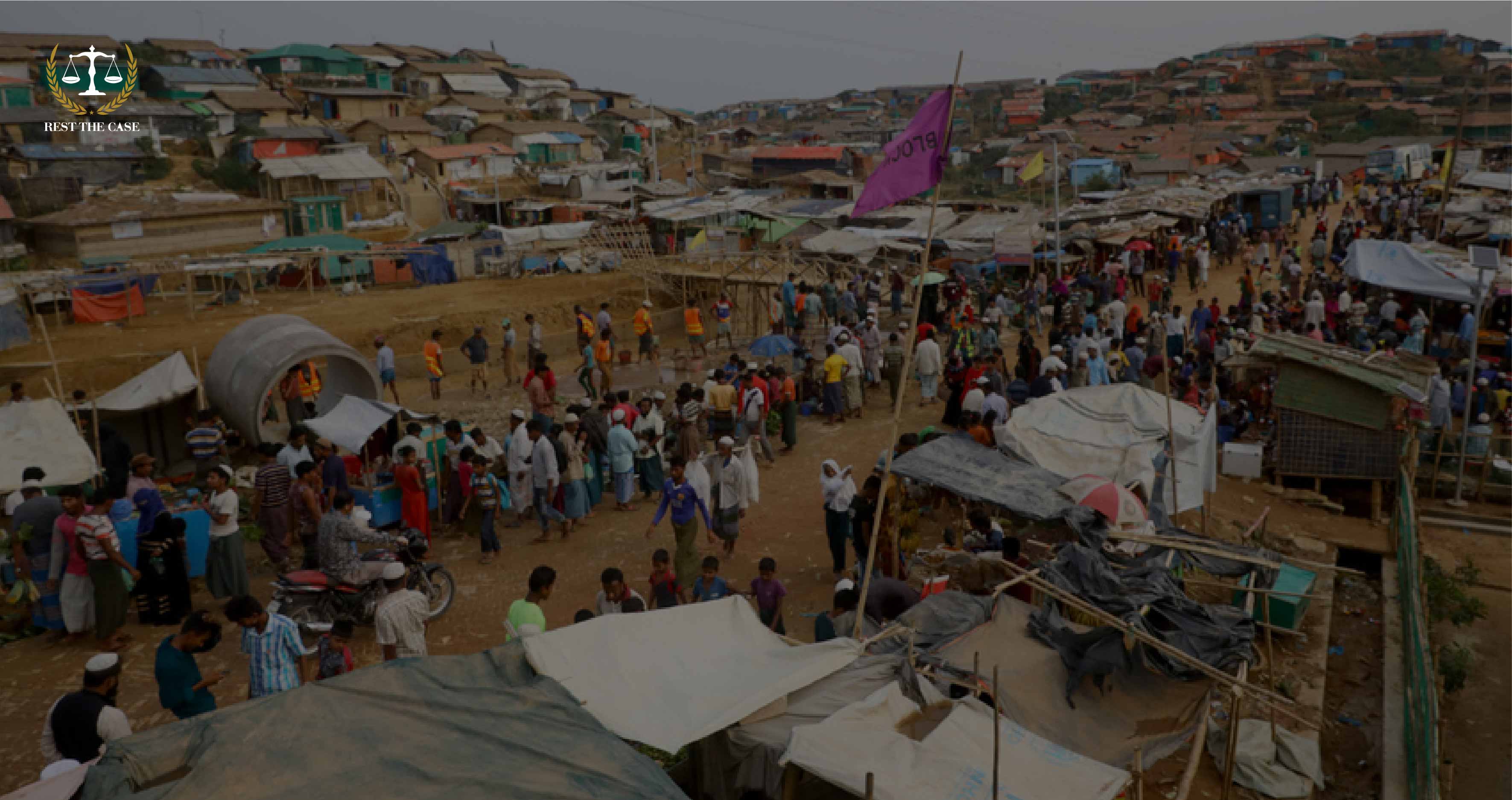As the air in Afghanistan seems to get tensed in fear and chaos after the Talibani intervention, the world has stepped in to offer refuge to the people of Afghanistan in crisis. While countries like the UK and the US reassess their refugee policy and citizenship rules by accepting 5000 and 20,000 Afghanis, respectively, countries like Tajikistan, the neighbouring country, have announced accepting 1,00,000 Afghans.
Introduction
To understand how International Law can mitigate the struggle of Afghanis and reinstate the Afghan peace process, let’s first understand what International Refugee Law in the first place is -
The movement of men and women between states, whether refugees or ‘migrants ', takes devote a context in which sovereignty remains important, and specifically that aspect of sovereign competence which entitles the state to exercise prima facie exclusive jurisdiction over its territory and to decide who among non-citizens will probably be allowed to enter and remain, and who will be refused admission and required or compelled to leave.
Like every sovereign power, this competence must be exercised within and based on law. The state's right to regulate the admission of non-citizens is susceptible to certain well-defined exceptions favouring those looking for refuge and others.
The Convention Refugee Definition
Article 1A(1) of the 1951 Convention applies the definition of ‘refugee 'first to any person considered a refugee under earlier international arrangements. Then, Article 1A(2), read now together with the 1967 Protocol and without time or geographical limits, supplies a general definition of the refugee as including any person who is outside their country of origin and unable or unwilling to go back there or even to avail themselves of its protection, owing to well-founded anxiety about persecution for reasons of race, religion, nationality, membership of a specific social group (an additional ground not within the UNHCR Statute), or political opinion.
Stateless persons are often refugees in this sense, where the country of origin (citizenship) is understood as 'country of former habitual residence '. However, it's not necessary to flee because of fear of persecution or even actually to be persecuted.
Read more: What are International Treaties and Why Should You Care About Them?
Persecution and the Reasons for Persecution
Although central to the refugee definition, ‘persecution itself isn't defined in the 1951 Convention. Articles 31 and 33 refer to threats to life or freedom, so clearly it contains the threat of death, or the threat of torture, or cruel, inhuman, or degrading treatment or punishment. A comprehensive analysis requires the overall notion to be linked to developments within the broad field of human rights. The recognition that concerns with persecution and lack of protection are interrelated elements. The persecuted don't enjoy the protection of this country of origin, while proof having less protection on either the internal or external level may produce a presumption regarding the likelihood of persecution and to the well-roundedness of any fear.
Non-refoulement
Besides identifying the primary characteristics of the refugee, states party to the Convention also accept specific obligations which are essential to achieving the target of protection, and thereafter an appropriate solution. Foremost among these may be the principle of non-refoulment. The word refoulement derives from the French fouler, which means to drive back or even to repel. As set out in the Convention, this prescribes broadly that no refugee will probably be returned in virtually any manner whatsoever to any country where they would be at risk of persecution.
The idea that a state ought not to return persons to other states using circumstances was initially referred to in Article 3 of the 1933 Convention associated with the International Status of Refugees. It was not widely ratified, but a new era began with the General Assembly's 1946 endorsement of the principle that refugees with valid objections should not be compelled to return to their country of origin.
An original proposal that the prohibition of refoulement is absolute and without exception was qualified by the 1951 Conference, which added a section to deny the advantage of non-refoulment to the refugee whom you can find ‘reasonable grounds for regarding as a danger to the security of the country or who, having been convicted by your final judgment of a grave crime, constitutes a danger to town of the country.' Besides such limited exceptions, however, the drafters of the 1951 Convention made it clear that refugees should not be returned, either to their country of origin or to other countries in which they would be in danger; additionally, they categorically rejected a proposal permitting 'cancellation of refugee status in cases of criminal or delinquent behaviour after recognition.
Convention Standards of Treatment
Every state is obliged to implement its international obligations in good faith, which often means incorporating international treaties into domestic law and establishing appropriate mechanisms to identify and treat those that should benefit. A procedure for the determination of refugee status thus goes a long way towards ensuring the identification of these eligible for protection and causes it to be easier for circumstances to fulfil its international obligations.
As well as the core protection of non-refoulment, the 1951 Convention prescribes freedom from penalties for illegal entry (Article 31) and freedom from expulsion, save on the absolute most serious grounds (Article 32). Article 8 seeks to exempt refugees from the application of exceptional measures which might otherwise affect them by reason only of their nationality. In contrast, Article 9 preserves the proper of states to take 'provisional measures on the causes of national security against a specific person. States also have agreed to supply certain facilities to refugees, including administrative assistance (Article 25), identity papers (Article 27), and travel documents (Article 28).
Asylum
No international instrument defines 'asylum '. Article 14 of the 1948 Universal Declaration of Human Rights says that 'Everyone has the right to find and take pleasure from asylum from persecution in other countries. Article one of the 1967 UN Declaration on Territorial Asylum notes that ‘Asylum granted by a State, in the exercise of its sovereignty, to persons eligible for invoke Article 14 of the Universal Declaration of Human Rights shall be respected by all other States.' But it's for ‘the State granting asylum to judge the causes for the grant of asylum'.
Refugees and Human Rights
The refugee problem cannot be separated from the field of human rights in general. It touches on both causes and solutions to ensure that knowledge and appreciation in understanding the refugee concept. Local laws of a country play an essential role in ensuring that international rules and human rights laws are applied effectively.
Keeping these International Refugee Laws and Human Rights Law in perspective, it is ascertained that the displaced refugees have a place to go.
With the dialogues floating around between the United Nations and its member countries to set up an International Rescue Committee, the refugee laws seem to be the ray of hope Afghanis have been seeking. For, to the world too, Afghan Lives Matter.
Stay updated with what’s happening around the globe and contribute by spreading the word by reading more such articles RestTheCase.
Author: Shweta Singh





